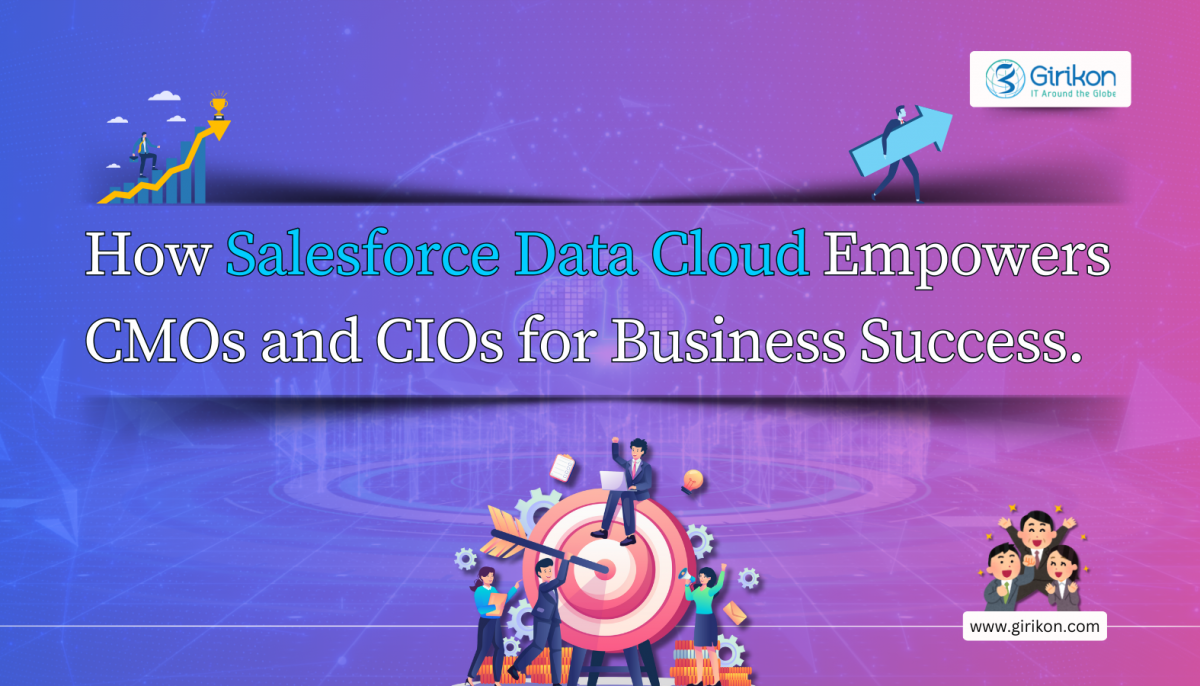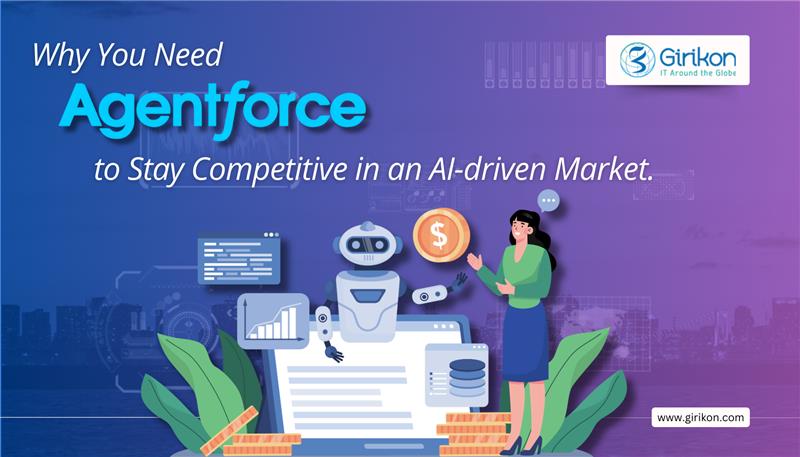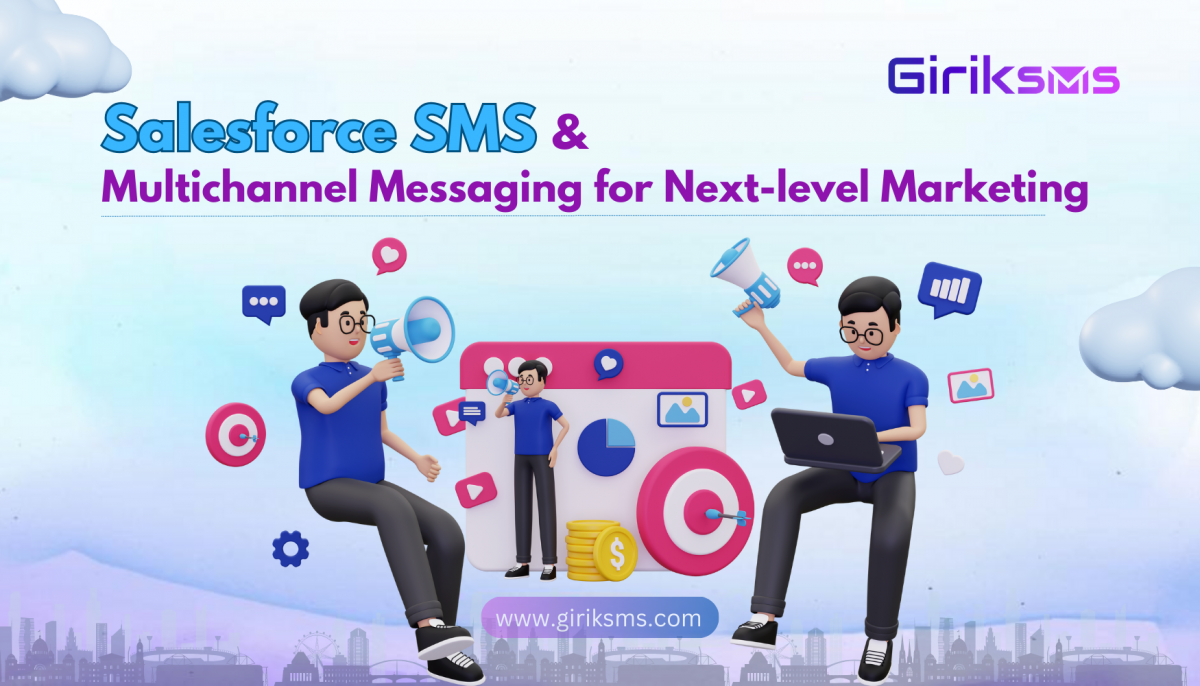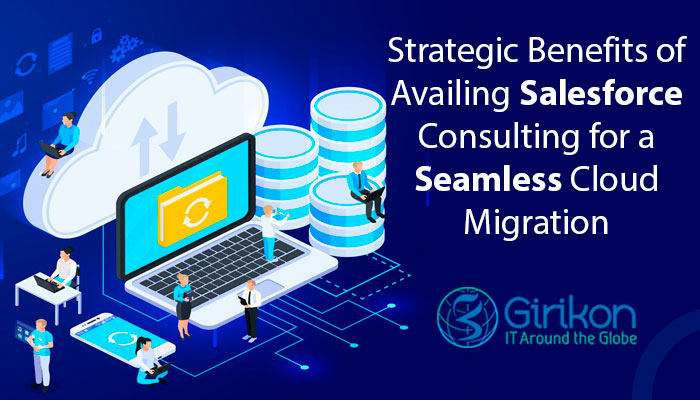Salesforce Lightning, put simply, is next generation CRM. With Salesforce Lightning, developers can build stunning apps with unprecedented ROI.
Lightning is super-fast, extremely powerful, very intuitive and has an abundance of features. It is a lightweight, component-based framework purpose built for accelerated app development. With Lightning, admins and developers can build and deploy apps faster than ever before, and makes business users more productive in every moment.
Let’s look at some of the features of Salesforce Lightning that make it so powerful:
Kanban View
The Kanban view feature is available exclusively in the Salesforce Lightning experience. As was expected, it has become a natural go-to for most Salesforce users. Regular everyday users of Salesforce regard Kanban as their online workspace, and not just another view within Salesforce where data is presented based on selection of filters.
For instance, when sales reps open the opportunity list view in Salesforce, they can view active sales opportunities organised by their respective stages in the timeline on a Kanban board. This view displays the opportunities within the selected filter. With this view, sales reps can get a clear view of the stage they are at in the sales process for each and every opportunity.
Email Integration for Lightning
Lightning does away with the need for shifting back and forth between your email app and Salesforce. Email can now be seamlessly and easily integrated with Salesforce in a single console, thanks to Lightning.
Users can easily integrate Outlook, Gmail or other email services and bring together all connected Salesforce data such as call logs and tasks into the email UI. Lightning significantly improves productivity by allowing users to work directly from their email, with all the associated data they need from Salesforce.
Salesforce Experience Cloud Communities
Salesforce communities has been renamed Salesforce Experience Cloud. It includes tools used by businesses to connect with their customers and partners through shared portals on the Salesforce platform. With Salesforce Lightning, developers can easily create and manage branded community portals.
This feature of Salesforce Lightning comes with an inbuilt powerful drag-and-drop interface. With this feature, users can easily add new functionality and content to the platform. With Salesforce Experience Cloud, it is easier than ever before to create content and feature rich community portals with the help of a library of pre-built templates.
Salesforce Lightning Dialer
Support reps and communication teams need to manage a high call volume to interact with prospects and customers on a regular basis. To be able to do this, their managers need to have information about the calls. In Salesforce Classic, this information is retrieved in real time. Having said that, managing calls would be far more efficient, if the phone functionality existed within Salesforce.
The Lightning Dialer comes in-built in Salesforce Lightning, which reduces clicks and makes the whole process of calling and recording more efficient. This is made possible by integrating the Salesforce UI with calling systems. This allows reps to streamline calls and it automatically records the key performance indicators.
Salesforce Lightning Paths
When reps are working on complex processes in Salesforce, they often need guidance. Salesforce Lightning Paths is a feature specially built for Salesforce users to offer them that guidance to work with complex tasks or opportunities.
With the help of this feature, Salesforce users are able to easily navigate through complex processes with the help of recommended pre-determined steps.
An Advanced User Interface
The Salesforce Lightning user interface is extremely robust and offers remarkably flexibility when compared to Salesforce Classic. The user interface offers easy interoperable code development across devices. It facilitates user productivity and drives work efficiency with much lesser code. Intelligent home pages built from template libraries allow users to track performance to goal, and get real time updates on key accounts.
Reports & Dashboards
The Salesforce Lightning Experience comes with a complete overhaul of reports and dashboards. They are now much more interactive, easier to navigate through and customise. Sales reps can get more insightful information from interactive charts without having to dive deep into reports. With the Lightning dashboard editor, dashboards can be fully customised with prebuilt components. Reports quality can be augmented and made more insightful without the need of the report builder. With the new Lightning UI, it’s much easier to find reports & dashboards via fully customisable home pages.
Activity Timeline
In Salesforce Classic, users have the option to view Open Activities which allows them to create tasks & record event. And with Activity History, users can log calls or send emails. In Lightning however, Salesforce has added a functionality that allows users to create the tasks and along with it, it gives you an activity timeline which shows the activities you have already created. With the activity timeline functionality users can view open tasks, scheduled meetings, and more in the activity timeline.
Salesforce Einstein
Salesforce users are familiar with Salesforce Einstein. This is one of the standout features of Lightning. Salesforce Einstein, an AI based digital data scientist, empowers businesses with the tools and resources to become more predictive about future trends and customer behaviour. Einstein significantly boosts the productivity of sales, service, marketing teams.
Live Feeds
This is another unique feature in the Salesforce Lightning Experience. When in a group in the Lightning Experience, the Chatter feed is on. Live feeds delivers posts and comments from other users in the group as and when they are posted, keeping you updated in real time about discussions within the group.
Lightning App Builder
The Lightning App Builder is a drag and drop tool using which you can easily create custom pages within the Lightning experience, giving you all that you need all in one place. With Lightning app builder, you can configure and customize lightning components in create business-specific apps.
Lightning Snap-Ins
Lightning snap-ins is a key component for Service Cloud users. Snap-ins allows businesses to quickly manage client support directly within their Lightning pages. With Lightning snap-ins service reps can reach out to customers in real time on any device, and deliver personalized service across every touchpoint in the customer journey.
Steelbrick Feature
Steelbrick is another unique feature built entirely on the Lightning infrastructure. With its CPQ (Configure, Price, Quote) functionality, sales reps can easily create offers and contracts for brands. Also, they can easily get approvals and signatures without ever leaving Salesforce.
AppExchange
There are a plethora of Lightning-ready third-party apps on the AppExchange. And this number is growing by the day. All these apps are vetted by Salesforce and are pre-integrated to work seamlessly with the Salesforce platform. With the help of these Lightning-ready apps, you can deliver consistent, personalised experiences to your customers, boost internal productivity and drive RoI. All you need to do is look for ‘Lightning Ready’ apps on AppExchange.
The intelligent, intuitive, and future-ready design of Lightning is enabling businesses to improve efficiency and productivity significantly. The stunning UI, intelligent views, integrated reports and dashboards, pick-and-drop functionality, limitless customizability, backed by the power of AI, makes Lightning a compelling choice. As a Salesforce Gold Certified Salesforce Partner, Girikon has helped multiple businesses leverage the Lightning experience to achieve business success. Contact one of our experts today to know more about how we can help you get the most out of Lightning.
Those who have been using Salesforce are likely to understand its intrinsic value of helping organizations manage their customer relationships. One of the most essential components of this process is managing customer communication. However, an important aspect of this process is managing customer communication. While Salesforce empowers you to connect with their customers, recognizing the best SMS App is crucial as text messaging is one of the most effective ways of communicating with existing and prospective customers.
A communication strategy is required when using Salesforce as it helps inform how organizations can connect with their customers. SMS messaging can play a significant role in that communication strategy as it’s a communication tactic that can help organizations in numerous ways, including:
Follow-Up with Leads: Text messaging (SMS) can go a long way in developing a long-term relationship with prospects by initiating a conversation with prospects, and customers, and promising leads who have yet to make a purchase while resolving their queries.
A Touchpoint for Feedback: It’s important to solicit customer feedback once you have served your customers. Positive customer feedback will enable you to display those traits to potential customers by using them as testimonials. SMS is a perfect way to reach out to your contacts and gather customer feedback. You can ask open-ended questions to probe your customers about their experience and the next steps to be undertaken.
Appointment Reminders for Re-scheduling and Cancellation: When you’re in a service business, it’s likely that you’ll require setting up appointments with your customer. It’s important to remind them about these appointments as they might forget about these appointments due to their busy schedule time and again. This can be problematic as missed meetings might leave your employees in the lurch. With SMS, it’s possible to keep customers with appointments on track. This increases the likelihood of customers making an appointment, making your business more effective. To make it simple for recipients, you can use a link in your text message so that they can reschedule or cancel the appointment as per their requirements.
Reminders for Deals and Discounts: SMS is a quick and convenient way of creating awareness among your target audiences when you are offering deals and discounts. These messages should be helpful to individuals if proper research has been done.
Features of an Ideal SMS App for Salesforce
Integration of Marketing Software: A robust App is required to align your text message campaign with your marketing campaigns if you are using different marketing software.
Ability to Send Bulk or Individual Messages: An ideal Salesforce SMS App has the ability to send messages in bulk to multiple recipients, as well as messages to an individual recipient with a personalized approach.
Storing Conversations: Storing conversations will allow everyone within a company to pick up right from the point conversation was left off. This makes it clear where a customer is w.r.t their interaction with your business. This allows organizations to serve their customers in a better way.
Quick and Easy to Set up: The SMS platform in question should be intuitive, easy to set up, and customizable. In case the platform is difficult to set up, it might cost your business time and money.
Quick Wrap-up:
A modern approach is required to connect with customers in this era. SMS allows you to effectively interact with your clients in a personalized way. By integrating SMS APP with Salesforce, it’s possible to reach the right audience while your marketing, sales, and support teams can interact from within a single platform.
A Guide to Higher Education Marketing
-
January 5, 2023
-
Indranil Chakraborty
A summary of Unified Higher Education Marketing
Higher Education marketing and communications takes place in a landscape where approximately 75% of campus staff associated with marketing and communications do not report centrally, but typically through a reporting head such as a college dean or department leader. Consequently, this can lead to cascading operational inefficiencies, brand misperception, and an incoherent experience for students, faculty, staff, and supporters.
While colleges and universities can adopt several different marketing and communications strategies for various campus functions, one of the critical ones is to unify and centralize specific aspects of marketing and communications. Unfortunately, this approach comes with its inherent challenges and necessitates a high degree of collaboration.
Some of those challenges include:
Resistance to change: The common perception that the current state is adequate as is, can stall a more unified way of working.
Siloed nature of departments: A legacy culture of decentralization makes collaboration and unification more difficult.
Shadow technology: Marketing technology tools and solutions implemented without guidance from marketing or IT.
Discounting central marketing and communications: When the central department isn’t viewed as a key partner in marketing and communications, departments depend on outside agencies.
Moving too quickly: Trying to get too many departments aligned at once can complicate things rather than simplifying.
The Benefits of Unified Marketing and Communications
There are several benefits associated with a unified approach to higher education marketing and communications that go beyond just a connected experience for students, faculty and staff.
These include some key operational efficiencies that save time, augment knowledge and absorption, and distributed costs among departments. As budgets change, marketing teams should be able to show the evident benefits of alignment.
Shared Cost: Most colleges and universities have marketing and communications teams working with different technologies. This leads to cost redundancies that aren’t always apparent.
Shared Knowledge: When using many different technologies, there are limitations in combining and understanding knowledge to drive innovation.
Shared Data: Data is critical to understanding how institutions are engaging with stakeholders in a manner that makes sense for them.
Shared Messaging: This constitutes messaging with an appropriate level of personalization.
5 Strategies for Higher Education Marketing and Communications
The following five strategies should be embraced to achieve operational efficiencies across campus.
1. Consistent Messaging, Voice, and Tone
A central messaging platform is vital. While centralised messaging, voice, and tone is important, it needs to be relevant for various departments across campus, for it to be widely adopted. For messages to resonate amongst the audience, it is essential to understand the overlap of audiences.
Media: Media rules of engagement should be established clearly, to ensure consistent messaging across print, social media, web, and email.
Brand: Most colleges and universities don’t have the bandwidth to support multiple brands. It is important to adopt a “branded house” strategy and foster sharing of resources.
2. Segment Constituents
Since the pandemic hit us, audience segmentation has been a key topic of discussion for higher education marketers and communicators. However, limited access to all data, especially constituent metadata such as descriptive information, makes audience segmentation and targeted personalization of messaging a challenge. Consequently, engagement is at times carried out using batch wise email blasts.
The key points to consider are where the data is, its accessibility, can the preferred marketing and communications platform use it, and can it be segmented prior to launching outbound campaigns.
Metadata for Constituents:
Full name
Address
Major
Last event attended
When they last donated
Expected graduation date
Research they engage with
Forms submitted across the college/university
3. Support Services
It is essential for marketers and communicators to be viewed as a strategic partner and not an someone who are meant to take orders for the rest of campus. Unfortunately, establishing this alignment doesn’t happen organically. It needs complete and mature support services that bring staff together from discrete departments.
To begin with, best practises should be documented and made accessible online easily. Also, it must include ongoing training so that departments and staff can fully absorb the brand message, voice, tone. And understand how technology can help them to deliver it to the right audience.
Higher Education Institutions that have successfully achieved alignment conduct monthly or quarterly meetings amongst all their campus partners where they share experiences and deliberate on ways to further engagement.
Suggested Support Services Include:
Brand Assets Library: Includes fonts and typesetting, color palette, graphic elements, email guidelines and templates, social media guidelines, and web standards.
Training: Includes onboarding and regular training. Training methodology should balance courses for beginners and advanced ones, to keep all partners engaged.
Campus Community: Regular meeting for the central department to share strategy with partners and encourage partners to share their perspectives.
Governance Model: Establish the rules of engagement that partners need to follow. In an ideal scenario, the central department for marketing and communications is the owner.
Center of Excellence (COE): This is a must when you are managing a central technology platform. It allows campus partners to ask questions and receive guidance and support.
Innovation Workshops: Campus partners can learn about new features and functionality about the technology being used and understand how they will be used going forward.
Best Practices Sharing: Regular feedback sessions to establish what’s working and what’s not. This opens up opportunities for partners to learn from each other’s mistakes and/or successes.
4. Have a Full Stack MarTech
A unified, aligned higher education marketing and communications team is one that drives engagement with the right audience with a robust central MarTech strategy.
Higher Educational institutions deploy a huge amount of marketing and communications messaging across multiple digital channels, such as email, SMS, web, ads and social media. While it is important to have a rich set of features and functionality for creating and launching campaigns across channels, the ability to have actionable data and deliver personalization is what is most important.
This is where a best-in-class CRM platform for higher education becomes critical to aggregate constituent information, and use that information to segment audiences and deliver a personalized and relevant engagement.
5. Plan Big, Start Small
Once you’ve identified your brand messaging platform, and established campus-wide technology, along with complete support systems, the next step is to get campus buy-in to set your plans in motion.
Most colleges and universities however, operate on a decentralized model. Unless there’s a clear directive from the top leadership, bringing other departments along would require a consensus. If working with your central team is challenging, other departments may not see the value in aligning with them.
Big changes don’t happen overnight, so start with small steps, one at a time. Identify and start with partners that are open to innovation. Do a test pilot, and fine-tune a unified approach. The learnings acquired from early partnerships are key since they form the blueprint that other constituents can follow.
Steps To Get Started
Identify a large, strategic partner who you think is key to success. Get them on board in the planning phase itself.
Onboard one or two smaller departments with whom you have a good rapport. These departments should be aware of the value of alignment and are willing to innovate and learn with you.
Keep the rest of the campus apprised of these partnerships. Some may be skeptical, but once they see value in what you have undertaken, they will get on board.
Unified higher education marketing and communications can be quite a challenge. It requires a significant amount of effort to ensure alignment across many different departments, but it’s totally worth the effort. Higher Education institutions that follow these marketing and communications strategies can attain higher operational efficiency, a better understanding of the campus-wide marketing technology landscape, and higher engagement from their constituents.
Behind every great strategy is a partner that you can trust. You need a certified expert. Learn more about how you can partner with Girikon, a Certified Salesforce Partner, to support your institution’s marketing and communications teams.

 +1-480-382-1320
+1-480-382-1320 +44-7428758945
+44-7428758945 +61-1300-332-888
+61-1300-332-888 +91 9811400594
+91 9811400594


















